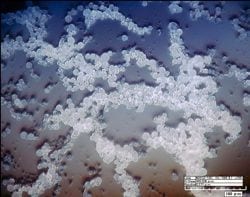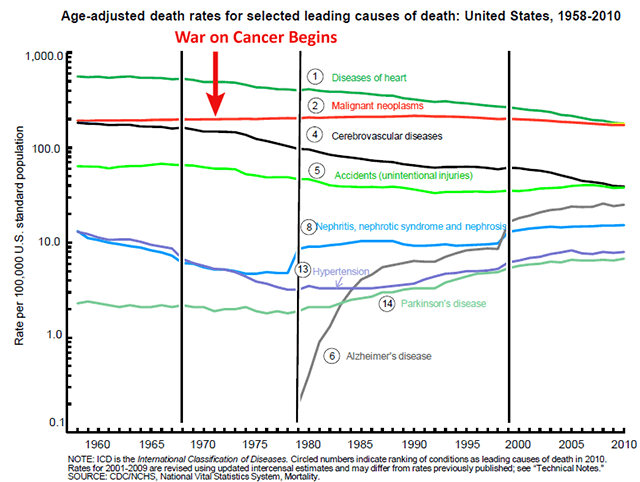
Microplastics have become a big concern in the world’s oceans and estuaries.
Water pollution remains a significant problem in bodies of water large and small worldwide; however, in addition to the visible plastic litter, the even larger problem are small pieces of polyethylene or polypropylene referred to as microplastics, which international researchers acknowledge as a significant threat to water and aquatic ecosystems.
Researchers at the Virginia Institute of Marine Science (VIMS), College of William & Mary, say that one of the two primary sources of microplastics they found are substances known as “microbeads” — present in scores of household products such as toothpaste, sunscreen, shampoo, soap, and moisturizers.
Kirk Havens, a Virginia Institute of Marine Science researcher, states:
Microplastics have become a big concern in the world’s oceans and estuaries. We already know that larger plastic items can harm organisms like turtles, seabirds, and fish by interfering with digestion or through strangulation; a concern with microplastics is that they’re even more widely dispersed, and small enough to be eaten by a much more diverse group of organisms. Once ingested, these compounds and anything they’ve absorbed can be magnified up the food chain.
Rob Hale, a professor at Virginia Institute of Marine Science and an expert on marine toxic chemicals, says some small plastic particles absorb organic pollutants such as polychlorinated biphenyls (PCBs) and DDT. They have reportedly been found in the small bits of plastic in marine worms, tiny crustaceans, and filter feeding animals, such as mussels and barnacles. Hale adds:
Depending on their size and composition, plastics may release previously bound-up chemicals into the water as they break into particles. At the same time, limited researchsuggests the changing composition of the smaller plastic bits may make it easier for them to absorb other chemicals that may be in the water. […] When something comes along and eats [a piece of microplastic], they have basically ingested a pill of chemicals.
Microplastic pollution is also a problem in freshwater lakes, say researchers from École Polytechnique Fédérale de Lausanne (EPFL). They reported detecting surprising amounts of microplastic pollution in Lake Geneva, which is one of the largest lakes in Western Europe.
They found pieces of plastic waste up to 5mm in diameter in the waters of the lake, which surprised them, given “the massive efforts put into protecting the lakes shores over the past decades, both on its French and the Swiss shores.” In sampling the beaches, they found plastic in each and every sample.
The debris included polystyrene beads, hard plastics, plastic membranes, and pieces of fishing line. The researchers say this leads them to believe that similar conditions exist in other freshwater bodies worldwide.
The EPFL researchers also surmise:
Microplastics in continental waters may be the main source of microplastic pollution in oceans, where huge hotspots containing high concentrations of these pollutants have formed. Scientists estimate that only around 20 percent of oceanic microplastics are dumped straight into the sea. The remaining 80 percent are estimated to originate from terrestrial sources, such as waste dumps, street litter, and sewage.
The researchers say that “the full extent of their consequences in lakes and rivers is only now being investigated,” and have had their recent findings published in the latest issue of the journal Archives des Sciences. The Swiss Federal Office for the Environment is also extending its research to an exploration of lakes and rivers across the country that will survey the pollution in lakes, rivers, and biota plus the levels of micropollutants, such as PCBs, which, they say, “have already been found stuck on microplastics from Lake Geneva in significant concentrations.”
The Latest Bing News on:
Microplastics
- Microrobotic Swarms Tackle Microplastics and Bacteria Pollutionon May 9, 2024 at 7:18 am
In recent research published in the journal ACS Nano, researchers reported how swarms of microscale robots, or microrobots, collected microorganisms and plastic fragments from water.
- Is Your Teabag Exposing You to Microplastics? Yes, According to New Researchon May 9, 2024 at 6:03 am
I remember the first cup of hot tea I ever had. I was 17 and recovering from a misdiagnosis that left me unable to walk or feed myself. My mom had to go to work and so left me with my grandmother to ...
- Swarms of Miniature Robots Clean Up Microplastics and Microbes, Simultaneouslyon May 9, 2024 at 1:32 am
Microscale robots that mimic natural swarms, like schools of fish, have been designed to capture microplastics and bacteria from water.
- Tiny tenacious robots snatch bacteria and microplastics out of the wateron May 8, 2024 at 1:57 pm
Scientists have developed tiny "robots" which appear to be very effective at removing microplastics pollution from water. What's more, the little bots also target the harmful bacteria that often hitch ...
- America has a $250 billion problem: Microplastics have invaded our bloodstreams and may increase the risk of heart attack and strokeon May 8, 2024 at 7:52 am
For all the damage that microplastics are doing to the planet, it may be that only an impending threat to the human body will direct the kind of attention to the issue that it has long deserved. That ...
- Video shows how swarms of miniature robots simultaneously clean up microplastics and microbeson May 8, 2024 at 5:00 am
When old food packaging, discarded children's toys and other mismanaged plastic waste break down into microplastics, they become even harder to clean up from oceans and waterways. These tiny bits of ...
- Microrobots Swarm the Seas, Capturing Microplastics and Bacteria [Video]on May 8, 2024 at 5:00 am
Researchers have developed microrobots capable of removing microplastics and bacteria from water, addressing the dual threat of pollution and disease spread in aquatic environments. When old food ...
- Microplastics are everywhere, even in your bloodstreamon May 7, 2024 at 2:15 am
As the film unravels, audiences are made scarily aware of the presence of microplastics in food, soil, clothes, blood, feces and daily household items. More shockingly, the film captures microplastics ...
- 'Everywhere we looked, we found evidence': Microplastics expert on 20 years of pollution researchon May 6, 2024 at 9:14 am
Thirty years ago, while counting barnacles, limpets and seaweeds along rocky shores, I started noticing a daily tide of litter, mostly plastic. As a marine biology Ph.D. student at Liverpool ...
- Microplastics: A looming threat to our well-beingon May 1, 2024 at 3:17 am
The pervasive presence of microplastics in our environment has become an issue of global concern, prompting urgent action from scientists, policymakers, and individuals alike. These tiny plastic ...
The Latest Google Headlines on:
Microplastics
[google_news title=”” keyword=”microplastics” num_posts=”10″ blurb_length=”0″ show_thumb=”left”]
The Latest Bing News on:
Nanoplastics
- Turkish researchers' microplastic detection tech enters global literatureon May 8, 2024 at 11:17 pm
Internationally lauded, Turkish researchers' pioneering microplastic detection technology swiftly identifies environmental and health ...
- Scientists explore nature’s promise in combating plastic wasteon May 8, 2024 at 6:36 am
By Claire Asher Plastic is a remarkably versatile and durable material, which has made it indispensable in almost every area of modern life. But these same properties, amplified by our ...
- What are nanoplastics? An engineer explains concerns about particles too small to seeon May 6, 2024 at 5:33 am
Nanoplastics are the smallest microplastics, far narrower than a human hair. Very little is known about their composition, structure or how they break down in the environment.
- Plastic can silently enter our body with every breath we takeon May 2, 2024 at 10:30 am
Research shows inhaled plastic particles deposit in the respiratory system, affecting health based on size, shape, and breathing rate.
- Turning The Tide on Plastic Pollution Requires a Bold Global Effort | Opinionon April 24, 2024 at 6:12 am
We are at a tipping point. Plastic pollution is affecting planet, animal, and human health. We have hope that INC-4 stakeholders will take important steps toward solidifying a global treaty on plastic ...
- Which foods have the most plastics? The answer may surprise youon April 22, 2024 at 4:29 pm
One liter of water — the equivalent of two standard-size bottled waters — contained an average of 240,000 plastic particles from seven types of plastics, including nanoplastics, according to a ...
- Revealed: how much plastic is in our wateron April 21, 2024 at 12:13 pm
Followed categories will be added to My News. Microplastics are small fragments measuring up to 5mm, but nanoplastics are absolutely minuscule, measuring no more than one micrometre – about one ...
- Revealed: how much plastic is in our wateron April 21, 2024 at 12:02 pm
Microplastics are small fragments measuring up to 5mm, but nanoplastics are absolutely minuscule, measuring no more than one micrometre – about one sixtieth the size of a grain of salt.
- Bottled water packed with nanoplastics, study findson March 21, 2024 at 5:00 pm
At 1,000th the average width of a human hair, nanoplastics are so teeny they can migrate through the tissues of the digestive tract or lungs into the bloodstream, distributing potentially harmful ...
The Latest Google Headlines on:
Nanoplastics
[google_news title=”” keyword=”nanoplastics” num_posts=”10″ blurb_length=”0″ show_thumb=”left”]










